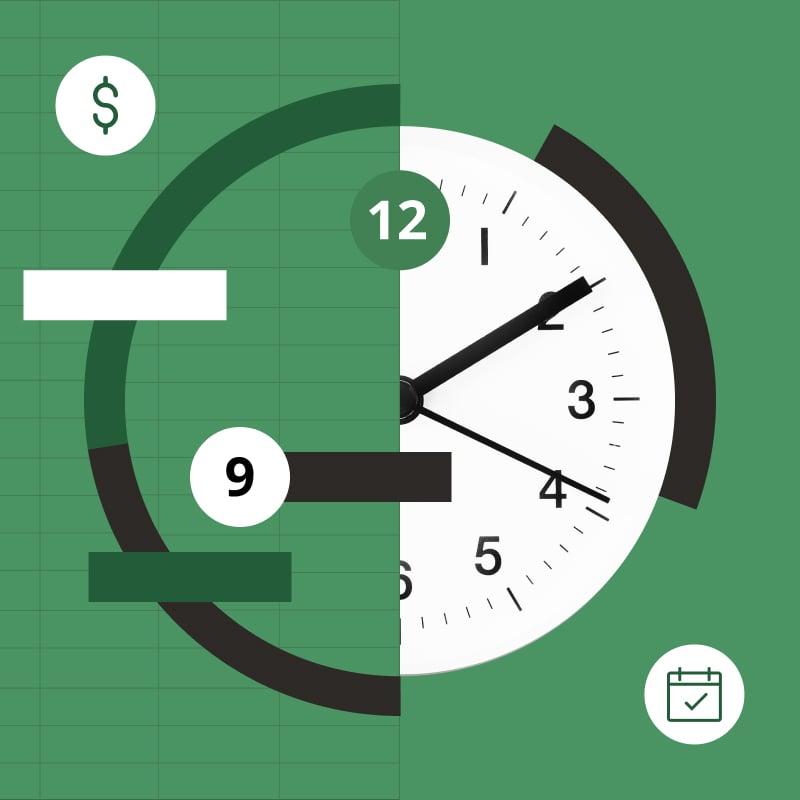
Long gone are the markets of growth at all costs—budgets are tight, and doing “more with less” is the motto.
While revenue growth is still the north star, organizations are focusing more on repairing inefficiencies within their operations.
This has four major implications for the way businesses are building their budgets for 2024:
I had the chance to speak with Melissa Howatson (Chief Financial Officer at Vena), Devendra Kalwani (Associate VP of Finance at Capstone Infrastructure) and John Power (Chief Operating Officer at Fluence Technologies) on our recent livestream, Budget Season: How To Focus Your Planning on the Year Ahead.
Our conversation focused on sharing best practices for the annual budgeting process amid economic uncertainty, and I've distilled the top takeaways for you here.
The right approach depends on your company's stage and growth curve.
If you're an earlier startup company, you can't look back at previous years’ numbers to inform the future. So, a bottoms-up approach is advisable.
In this case, you need to go into deep detail on drivers and quarterly predictions and ask:
For mature companies, a bottoms-up approach can provide valuable insights—especially when using a rolling forecast to understand how current operational drivers may impact your budget. But it's often more effective to begin with a strategy-aligned, top-down approach to establish guideposts and gain company-wide alignment.
From there, a hybrid approach can work wonders.
Start with a clear vision of finance leadership’s goals, and then shift to a bottoms-up perspective to align it with traditional methods. Identify and outline any differences along the way. This helps pinpoint areas for adjustment—whether it's cutting costs or finding opportunities for investment.
John says that there are three commonalities between companies that have successfully implemented changes in their planning process. Each of them have:
Pro tip: For this budget season, focus on scenario-based planning. Identify factors outside of your control (such as interest rates or exchange rates) and model multiple scenarios. Then, re-adjust your strategic finance goals based on what you observe over a prolonged period.
In larger corporations like Capstone, coordinating budgeting processes across different departments and phases can be challenging. To tackle this, communicate early and get input and buy-in from the C-suite to set the tone for the budget season.
On the other side of the coin, startups need to inform and appease investors without recourse to historical data for forecasting. Here, executive leadership—like the COO for instance—needs to make educated assumptions about the budget and revisit them constantly to see how they pan out.
The most important aspect of building a budget collaboratively is instilling ownership and accountability in every department. The COO is integral to ensuring alignment between the CEO, CFO, and multiple teams to guarantee an evolving, iterative and achievable budget.
Finally, engage people across the organization beyond the finance team (for instance Sales, Marketing, Customer Support and Product) in financial and performance management processes. By doing this, you create awareness, involvement, and a sense of responsibility among employees, which will lead to better budgeting decisions.
Start planning early and make the process as simple as possible—whether that's through tools or a robust plan that prevents rework. “The middle of the third quarter is an ideal time to start budgeting when you need to collaborate with different departments,” says Melissa.
Your next year’s budget always has to be a step towards your ultimate long-term plan. To ensure alignment, evaluate your:
Study all of these areas together for a cohesive budget. Otherwise, you run the risk of siloed teams and streams of work. Once you’ve aligned each of these streams, your budget should come together by the end of the fourth quarter.
This way, by the start of the new year, management is aligned because they have already weighed in, and the board is aligned because they have sneaked a peek—everyone’s informed and invested.
Devendra says that the pre-work for the budgeting process is as critical as the budget itself. It can involve:
John agrees. “Budgeting is fundamentally how you manage the business day in and day out. Evaluate big ticket items that drive the plan and move the needle on revenue or costs. When you get into the planning cycle, you cross the T’s and dot the I’s and pull it all together.”
Your budget is the financial articulation of all your operational plans. If you lay the groundwork properly and thoughtfully, your budget builds itself. Ultimately, it’s not about altering the budget; it’s altering the operations of your business to drive a different outcome.
[Pro tip: evaluate individual compensation based on goal alignment to increase goal congruency.]
Budgeting technology that provides you with unified templates and a centralized data repository does a great deal of the pre-work for you when budget season rolls around. A solution like Vena also makes cross-departmental collaboration easier by automating reminders and reports, so you have both input and buy-in.
As Vice President, FP&A at Vena, Tom Seegmiller is responsible for strategic finance, including business partnering, budgeting and forecasting, with a focus on optimizing enterprise value. Tom is instrumental in the formulation of the financial narrative for the executive leadership team, investors and board members. Tom has always had a focus on driving enhanced business decisions through leveraging financial and operational data. He is an experienced finance executive, having most recently led the finance team at Miovision Technologies. Prior to that, he was in senior FP&A leadership roles at OpenText. Tom enjoys golfing, skiing, exercising and traveling in his spare time, but most importantly, he loves spending time with his wife and daughter.
